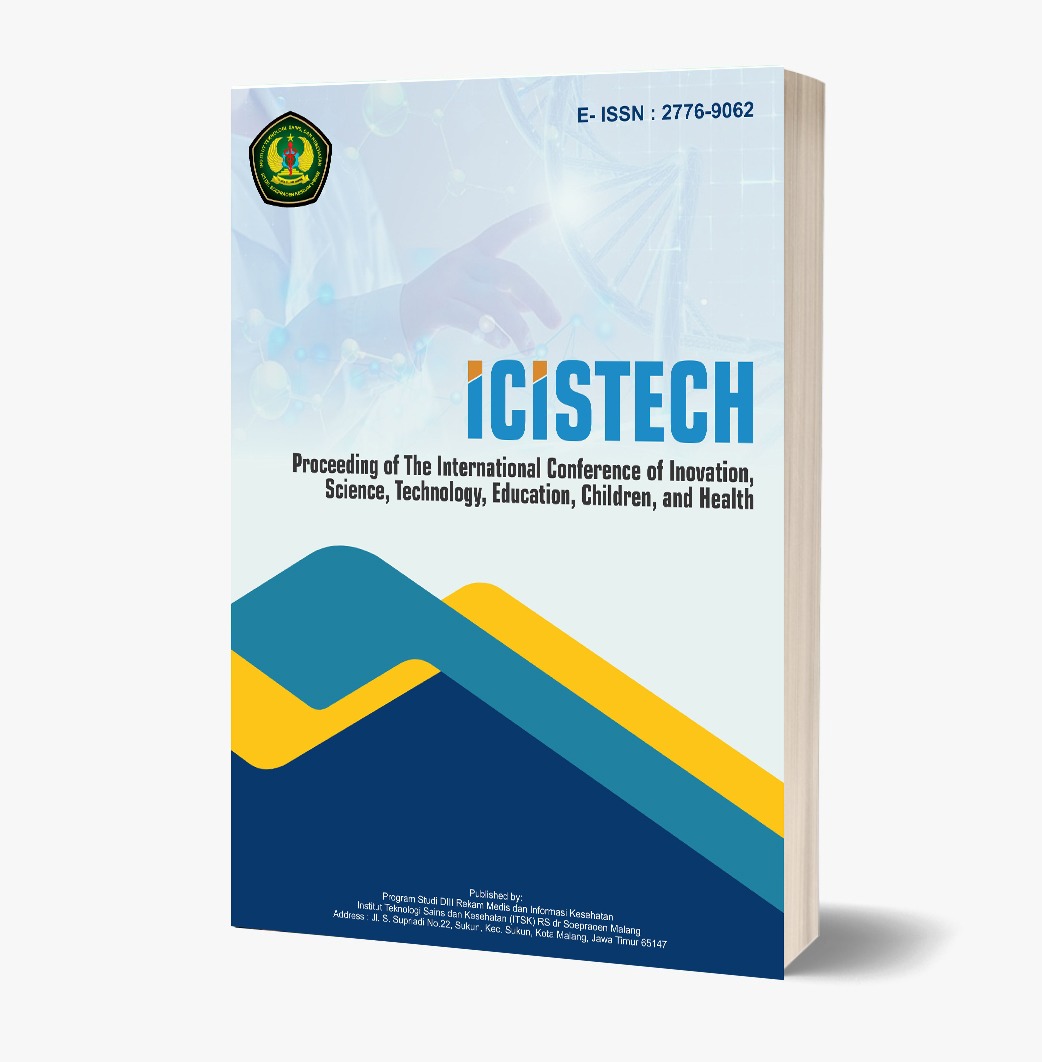Implementation of Fulfillment of Women Prisoners Rights to Get Decent Food: Case Study on Women's Prison Class IIA Jakarta
DOI:
https://doi.org/10.62951/icistech.v3i1.48Keywords:
Fulfillment of Rights, Female Inmates, Decent Food, Women's Prison, NutritionAbstract
Fulfillment of food needs in the Correctional Institutions essential to meet the nutritional needs requirements that are worthy of health and stamina of the body. The purpose of this paper is to describe the Fulfillment of the right to get decent food for female inmates. The method used in this study is normative juridical supported by field research in the form of questionnaires and interviews with informants. It uses the traditional approach as the primary legal material. The research was conducted at the Women's Prison Class IIA Jakarta in January-March 2020. In this study, it was determined that the withdrawal of samples using random sampling techniques as many as 50 respondents. The results showed that the Fulfillment of the right to get food in the Women's Prison Class IIA Jakarta is not good enough. Factors that hinder efforts to fulfill the right to obtain decent food include the quality of food produced and the unqualified nutritionists and cooks in Correctional Institutions. Researchers suggest fulfilling the request to get food for female inmates, employees who have a background in nutritionists and cooks.
References
Akın, G. (2019). Women behind the bars in Turkey. Women & Criminal Justice, 0(0), 1–17. https://doi.org/10.1080/08974454.2019.1673875
B. Ekumah et al., "Disparate on-site access to water, sanitation, and food storage heighten the risk of COVID-19 spread in Sub- Saharan Africa," Environ. Res., vol. 189, p. 109936, 2020, DOI: 10.1016/j.envres.2020.109936.
Bebbington, P., et al. (2017). Assessing needs for psychiatric treatment in prisoners: 1. Prevalence of disorder. Social Psychiatry and Psychiatric Epidemiology, 52(2), 221–229. https://doi.org/10.1007/s00127-016-1311-7
C. L. Firth, E. Sazie, K. Hedberg, L. Drach, and J. Maher, "Female Inmates with Diabetes: Results from Changes in a Prison Food Environment," Women's Heal. Issues, vol. 25, no. 6, pp. 732–738, 2015, DOI: 10.1016/j.whi.2015.07.009.
Chatterjee, D., & Chatterjee, S. C. (2018). Food in captivity: Experiences of women in Indian prisons. Prison Journal, 98(1), 40–59. https://doi.org/10.1177/0032885517743444
D. K. Cecil, J. McHale, A. Strozier, and J. Pietsch, "Female inmates, family caregivers, and young children's adjustment: A research agenda and implications for corrections programming," J. Crim. Justice, vol. 36, no. 6, pp. 513–521, 2008, DOI: 10.1016/j.jcrimjus.2008.09.002.
de Graaf, K., & Kilty, J. M. (2016). You are what you eat: Exploring the relationship between women, food, and incarceration. Punishment & Society, 18(1), 27–46. https://doi.org/10.1177/1462474515623103
Gussak, D. (2009). Comparing the effectiveness of art therapy on depression and locus of control of male and female inmates. Arts in Psychotherapy, 36(4), 202–207. https://doi.org/10.1016/j.aip.2009.02.004
Jeffries, S., & Chuenurah, C. (2019). Vulnerabilities, victimization, romance, and indulgence: Thai women's pathways to prison in Cambodia for international cross-border drug trafficking. International Journal of Law, Crime and Justice, 56(December 2018), 39–52. https://doi.org/10.1016/j.ijlcj.2018.12.001
Jeffries, S., Chuenurah, C., Rao, P., & Park, M. J. Y. (2019). Women's pathways to prison in Kenya: Violence, poverty, familial caretaking, and barriers to justice. Women's Studies International Forum, 73(August 2018), 50–61. https://doi.org/10.1016/j.wsif.2019.02.003
Knittel, A. K., Zarnick, S., Thorp, J. M., Amos, E., & Jones, H. E. (2020). Medications for opioid use disorder in pregnancy in a state women's prison facility. Drug and Alcohol Dependence, 214, 108159. https://doi.org/10.1016/j.drugalcdep.2020.108159
Loeb, S. J., Penrod, J., Hollenbeak, C. S., & Smith, C. A. (2011). End-of-life care and barriers for female inmates. Journal of Obstetric, Gynecologic & Neonatal Nursing, 40(4), 477–485. https://doi.org/10.1111/j.1552-6909.2011.01260.x
MacDonald, M. (2013). Women prisoners, mental health, violence and abuse. International Journal of Law and Psychiatry, 36(3–4), 293–303. https://doi.org/10.1016/j.ijlp.2013.04.014
N. Sawasdipanich et al., "Development of healthcare facility standards for Thai female inmates," Int. J. Prison. Health, vol. 14, no. 3, pp. 163–174, 2018, DOI: 10.1108/IJPH-07-2017-0032.
Nowotny, K. M., Rogers, R. G., & Boardman, J. D. (2017). Racial disparities in health conditions among prisoners compared with the general population. SSM - Population Health, 3(May), 487–496. https://doi.org/10.1016/j.ssmph.2017.05.011
Shlafer, R. J., Stang, J., Dallaire, D., Forestell, C. A., & Hellerstedt, W. (2017). Best practices for nutrition care of pregnant women in prison. Journal of Correctional Health Care, 23(3), 297–304. https://doi.org/10.1177/1078345817716567
Smith, C. (2002). Punishment and pleasure: Women, food and the imprisoned body. Social Review, 50(2), 197–214. https://doi.org/10.1111/1467-954X.00363
Smoyer, A. B. (2016). Making fatty girl cakes: Food and resistance in a women's prison. Prison Journal, 96(2), 191–209. https://doi.org/10.1177/0032885515596520
Smoyer, A. B., & Blankenship, K. M. (2014). Dealing food: Female drug users' narratives about food in a prison place and implications for their health. International Journal of Drug Policy, 25(3), 562–568. https://doi.org/10.1016/j.drugpo.2013.10.013
Smoyer, A. B., & Lopes, G. (2017). Hungry on the inside: Prison food as concrete and symbolic punishment in a women's prison. Punishment & Society, 19(2), 240–255. https://doi.org/10.1177/1462474516665605
Smoyer, A. B., & Minke, L. K. (2019). Hygge: Food and the construction of safety among incarcerated women in Denmark. Appetite, 141(February), 104319. https://doi.org/10.1016/j.appet.2019.104319
Tomaszewska, M., Trafialek, J., Suebpongsang, P., & Kolanowski, W. (2018). Food hygiene knowledge and practice of consumers in Poland and in Thailand: A survey. Food Control, 85, 76–84. https://doi.org/10.1016/j.foodcont.2017.09.022
Trasande, L., Shaffer, R. M., & Sathyanarayana, S. (2018). Food additives and child health. Pediatrics, 142(2). https://doi.org/10.1542/peds.2018-1410
Troisi, J. D., & Wright, J. W. C. (2017). Comfort food: Nourishing our collective stomachs and our collective minds. Teaching of Psychology, 44(1), 78–84. https://doi.org/10.1177/0098628316679972
Zhu, X. M., et al. (2017). Prevalence of borderline personality disorder and its risk factors in female prison inmates in China. Psychiatry Research, 250, 200–203. https://doi.org/10.1016/j.psychres.2017.01.065
Downloads
Published
How to Cite
Issue
Section
License
Copyright (c) 2024 Proceeding of The International Conference of Inovation, Science, Technology, Education, Children, and Health

This work is licensed under a Creative Commons Attribution-ShareAlike 4.0 International License.













